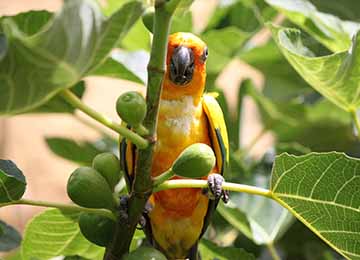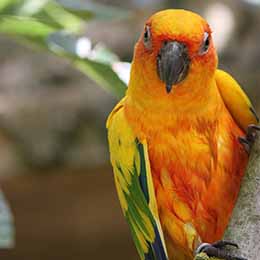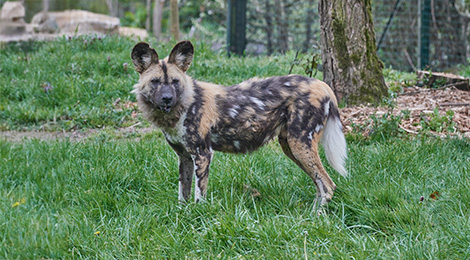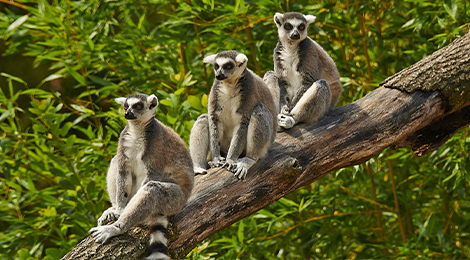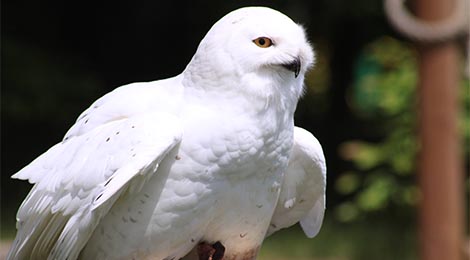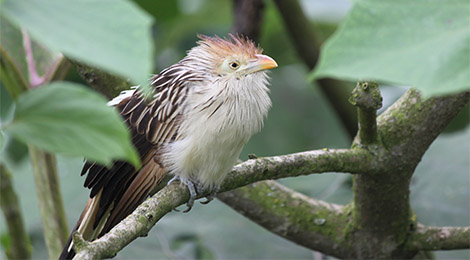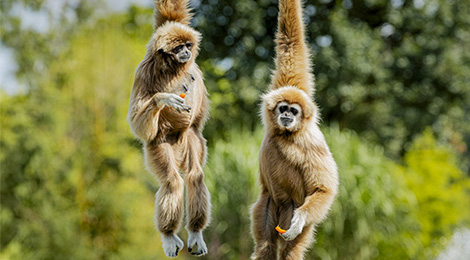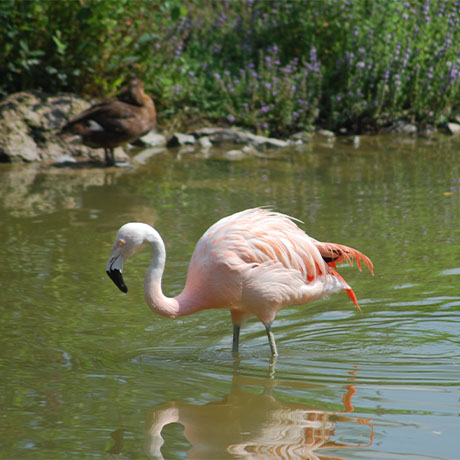A lively, playful, curious and highly sociable bird
Sun parakeets are of average build but highly robust. They have black eyes and a black beak, with lightly striped brown feet. Sun parakeets display one of two colour patterns: a magnificent plumage with reddish hues, green and bright yellow wings and a few blueish feathers at the tip of their tail; while juveniles have greener plumage that is duller with less yellow. Their feathers change as they age, becoming red, orange and yellow.
Sun parakeets live in small groups of 30 and are monogamous. The female incubates the eggs and rarely leaves the nest, while the male proudly defends his territory by puffing up his breast. Chicks take anywhere between a few minutes and a few hours to hatch. They are born blind and almost featherless and are fed by both parents.
Sun parakeets are found in forests, wooded savannas and palm groves in Brazil, French Guiana, Venezuela and the Amazon basin.
The Sun parakeet population has declined considerably over the last 30 years. For a long time they were captured in their natural habitat to be sold as domestic pets, and this parakeet species is now among the most endangered in South America.
-
HabitatSavannas, rainforest, wooded grassland
-
Food
Fruit, leaves, seeds and berries

Sun parakeets are highly agile and use their beak to climb on tree branches.
A zoological reserve populated by Asian elephants, giraffes, lions, tigers, hippos, chimpanzees, gibbons, wolves, ostriches ... Animals evolving in their reconstituted natural environment, to discover as a family.
All animals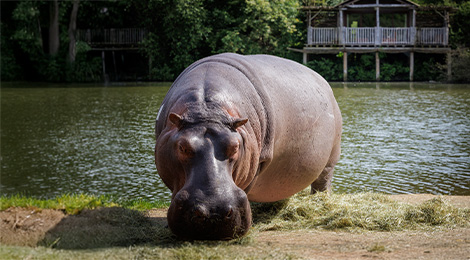
-
![]() Hippopotamus Discover animal
Hippopotamus Discover animal -
![]() African wild dog Discover animal
African wild dog Discover animal -
![]() Ring-tailed lemur Discover animal
Ring-tailed lemur Discover animal -
![]() Snowy owl Discover animal
Snowy owl Discover animal -
![]() Guira cuckoo Discover animal
Guira cuckoo Discover animal -
![]() Lar gibbon Discover animal
Lar gibbon Discover animal -
![]() Eurasian eagle owl Discover animal
Eurasian eagle owl Discover animal -
![Flamant du Chili debout dans l'eau au parc animalier Le PAL]() Chilean flamingo Discover animal
Chilean flamingo Discover animal



